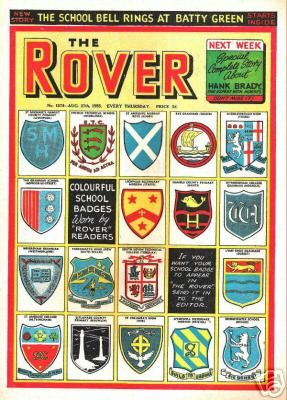|
|
That the Pond was originally a 'marl pit,' and dates back to at least 1850? Marl pits are common features in Norfolk fields and were dug to provide a source of either chalk (for composting) or clay (for brickmaking).
------
That, at around the time of D-Day, German PoWs were housed in a compound at the South end of the site, close to Mr Thompson's farm? The prisoners had made an agreement not to attempt escape and worked in the hospital complex.
------
That the 'Pit' was dug when the hospital was built, and its purpose still remains something of a mystery? One theory is that it was dug as a contingency mass grave, however Roger Garrard remembers a 1990s College Magazine article that said the pit was a dumping ground for surgical waste; removed eventually by mechanical diggers that took away a lot of soil before being grassed over. Roger adds: 'This would account for the shape, the almost straight line along the path that led from the tarmac past the labs, but I cannot vouch for it. It could be a spoof worked on a gullible Editor (Keith Chandler).'
From Anne Hoare - joint author & publisher of 'Wartime on a Country Estate' which describes the establishment of the 231st American Army Hospital that was eventually to become Wymondham College:
I have been told personally by local people who worked on the hospital, that gravel was taken out of the pit area for construction works. Heavy horses were used, presumably from local farms. The farmer, Mr. Peacock, bred them and cleared the golf course and grew one crop of beet on the site before construction works began. I have asked every American I have met & corresponded with regarding the purpose of “The Pit” but it had no significance to them. I certainly do not think that it was used for surgical waste as there was an incinerator on site and the staff were very careful about hygiene. There was a dump used by the Americans on a known site on Chapel Lane, Wymondham. In the 1950’s Norfolk County Council ran drama courses at the College in the Summer. Plays were performed in the pit.
------
That Wilkinson Court and Tomlinson Hall were named after former Ministers of Education?
Ellen Wilkinson was appointed Minister of Education by the new Labour Prime Minister Clement Atlee, after the 1945 General Election. She was the first woman in British history to hold the post. Her plans to increase the school-leaving age to sixteen had to be abandoned when the government decided that the measure would be too expensive, however she did manage to persuade Parliament to pass the 1946 School Milk Act that gave free milk to all British schoolchildren. Sadly, Ellen became depressed by her failure to bring in all the reforms she believed necessary, took an overdose of barbiturates and died on 6th February, 1947.
For more information, see http://en.wikipedia.org/wiki/Ellen_Wilkinson
Following the death of Ellen Wilkinson, George Tomlinson, was appointed in her stead and held the position from 1947 to 1951, when the Conservative Government came into power. Blunt and working class (from the Bolton area), he made it clear that the government would not exercise direct control over the curriculum. He is alleged to have said "Minister knows nowt about curriculum."
------
That Butler Hall was named after R.A. 'Rab' Butler, who has often been described as 'the best Prime Minister Britain did not have?' He was educated at Cambridge and became a lecturer there in French history before being elected to Parliament as a Conservative in 1929. He rapidly gained considerable Ministerial experience and, during the 2nd World War, was President of the Board of Education. He was largely responsible for the revolutionary 1944 Education Act that established compulsory secondary education in Britain. In 1951, he became Chancellor of the Exchequer but, largely because of his support for Prime Minister Anthony Eden during the Suez Crisis in 1956, it was Harold Macmillan and not Butler that was chosen as the new Conservative leader. He continued to hold a variety of ministerial posts until his retirement in 1964. The following year, he was created Baron Butler of Saffron Walden.
------
That Dr John Mosby, who was the warden at WC when it started in 1951, was a decorated WW1 air ace. See details here.
------
That the old-style Grammar School badge appeared on the front cover of The Rover comic number 1574 on August 27th 1955? We'd love to get our hands on a copy ..... just missed the eBay sale for this one. The badge is far right on the second row. Who was the 'Rover reader' who sent it in?

Wymondham College Remembered
